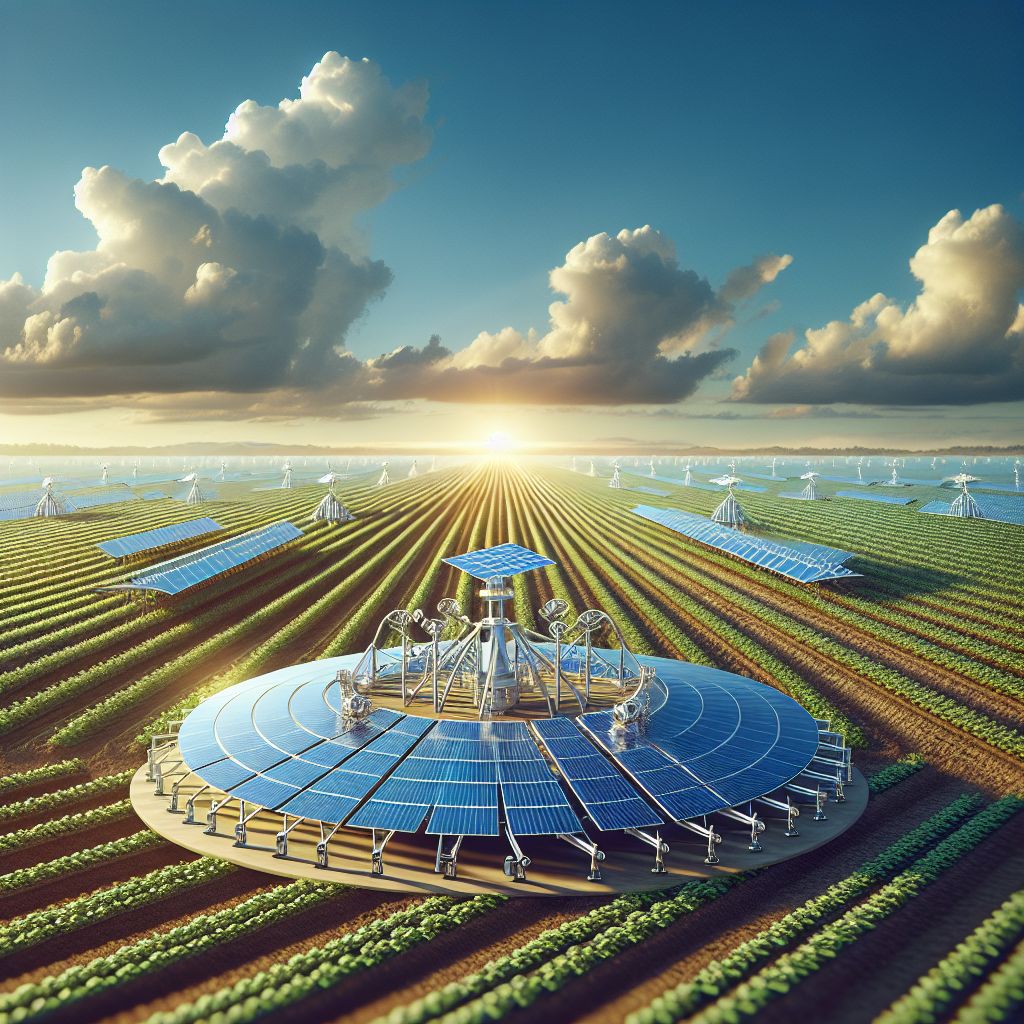
Every bit of sunlight and every spark of creativity matter when it comes to boosting farm productivity. You can’t just plant seeds and expect them to grow; you have to create a nurturing environment for your crops. That’s where solar panel trackers come in. These devices are a game-changer because they allow farms to capture more solar energy. This energy can then be used to power irrigation systems and other devices, resulting in healthier crops and higher yields.
Key Points
By optimizing sunlight capture, solar panel trackers can enhance farm irrigation and crop yield.
By tracing the sun’s path across the sky, dual-axis solar trackers offer superior efficiency.
Solar energy reduces operational costs, contributing to more sustainable farming practices.
While the installation of solar trackers requires careful planning, the long-term benefits can be significant.
Agricultural grants and subsidies can help offset the initial investment in solar technology.

Reaping Sunlight for Continuous Growth: Solar Trackers in Contemporary Farming
Solar trackers are advanced devices that tilt and rotate solar panels to follow the sun’s path, capturing maximum sunlight. This ensures that the panels are always in the best position to absorb solar energy, from dawn to dusk. For farmers, this means a dependable power source that can power irrigation systems, ensuring crops get the right amount of water at the right time.
How Solar Trackers Increase Energy Capture
Picture a sunflower that moves and turns to follow the sun’s path during the day. Solar trackers function in much the same way, altering the angle of solar panels to capture the maximum amount of sunlight. This is important because the more direct sunlight received, the more energy is generated. And more energy translates to more power for vital farm tasks.
Improving Irrigation Systems and Water Management
Proper water management is essential for crop health, and solar trackers can make a big difference. The extra energy they generate can power sophisticated irrigation systems that deliver water accurately and steadily, minimizing waste and ensuring each plant gets the water it needs to thrive.
Boosting Harvest Outcomes with Solar Tracking Tech in Agriculture
When you incorporate solar trackers into your agricultural game plan, you’re doing more than just cutting down on energy costs; you’re also laying the groundwork for a plentiful crop. The surplus energy allows for lengthier watering periods, particularly during key growth seasons, which results in stronger plants and potentially heftier harvests.
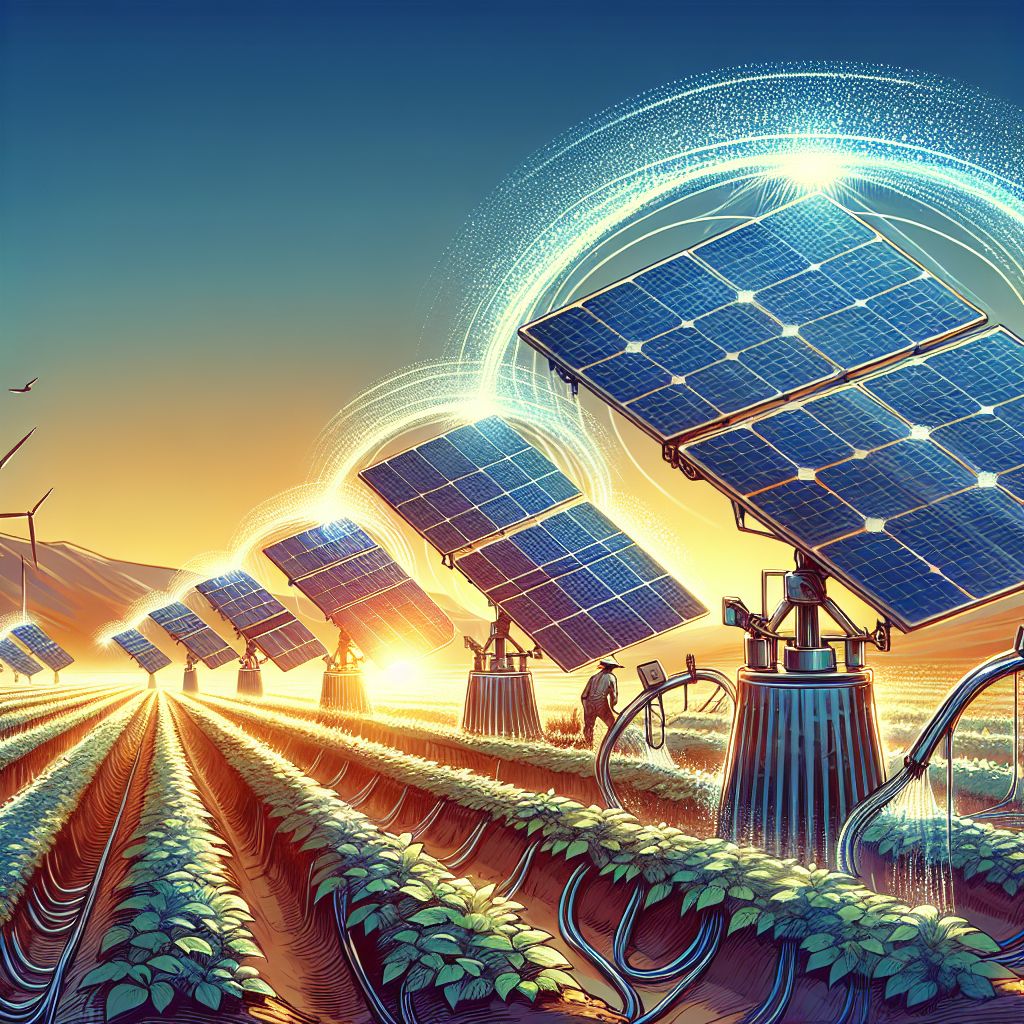
The Science Behind Solar Trackers
The science behind solar trackers is quite simple – by constantly facing the sun, these devices can increase the energy production of solar panels and improve the efficiency of irrigation systems on farms. With the benefits of increased energy production and efficiency, durability, and environmental sustainability, it’s no surprise that solar trackers are becoming a popular choice for farmers. As the demand for sustainable farming practices continues to grow, we can expect to see even more farms implementing solar trackers to power their irrigation systems in the future.
Single vs. Dual-Axis Trackers: Which Comes Out on Top?
Both single-axis and dual-axis solar trackers have their own advantages and disadvantages. Ultimately, the best option for an irrigation system on a farm will depend on various factors such as location, budget, and energy needs. For larger farms with predictable weather patterns, single-axis trackers may be a more cost-effective option. However, for smaller farms or locations with unpredictable weather, the higher energy output of dual-axis trackers may be worth the initial investment.
|
Criteria |
Single-Axis Solar Trackers |
Dual-Axis Solar Trackers |
|
Energy Production |
– 25-35% more energy production than fixed-tilt systems. 1, 3, 4 |
– 40-70% more energy production than fixed-tilt systems. 1, 2, 4, 5 |
|
Cost |
– Lower upfront and maintenance costs compared to dual-axis. 1, 2, 4 |
– Higher upfront and maintenance costs compared to single-axis. 1, 2, 4 |
|
Reliability |
– Less reliable due to more complex mechanisms that are prone to wear and tear. 1, 3, 4 | |
|
Maintenance |
– Higher maintenance requirements due to more moving parts that need regular inspection and servicing. 1, 2, 4 | |
|
Applicability |
– Well-suited for large, utility-scale solar installations on farms. 1, 3, 4, 5 |
– Better for commercial/industrial applications with limited space, may not be as practical for farms. 2, 4, 5 |
This table compares single and dual-axis solar trackers for an irrigation system on a farm:
Understanding the Mechanics of Solar Tracking Technology
In simple terms, solar tracking is a system that allows solar panels to follow the path of the sun throughout the day, maximizing their exposure to sunlight. This is achieved through the use of sensors and motors that adjust the position of the solar panels to ensure they are facing the sun at all times. This technology is particularly useful for irrigation systems on farms as it ensures a constant and optimal supply of energy to power the pumps.
Solar tracking technology is a game-changer for irrigation systems on farms. Its ability to maximize energy production, reduce costs, and have a positive impact on the environment makes it an ideal solution for sustainable agriculture. With the advancements in technology and decreasing costs, more and more farmers are adopting this technology to power their irrigation systems. It is a win-win situation for both farmers and the environment, and we can expect to see more farms embracing solar tracking technology in the future.
Practical Farming Success Stories
It’s easy to discuss the possible advantages of solar trackers, but it’s quite another to see them at work. Let’s see how they’re creating a tangible impact on farms across the globe.
Consider a small family farm in the sun-drenched Central Valley of California. They were getting crushed by their electricity bills, largely due to their irrigation system, and decided to invest in solar trackers. Not only did their energy bills drop dramatically, but their almond crop yield also improved due to more efficient water use.
Case Study: The Little Farm That Could
Take, for instance, the story of a small-scale vegetable farm in Colorado. The owners were initially hesitant about the upfront cost of solar trackers, but they quickly became believers when they saw a 30% increase in energy production compared to their neighbors with fixed-panel systems. This extra energy enabled them to expand their irrigation system, which resulted in a substantial increase in crop production and revenue.
Case Study: High-Tech Greenhouses Using Solar Tracker Efficiency
One of the success stories is from a high-tech greenhouse operation in the Netherlands. They used solar trackers not only for energy but also to optimize light exposure for their plants. The results? A supply of fresh tomatoes all year round, with a significantly lower carbon footprint than traditional farming methods.
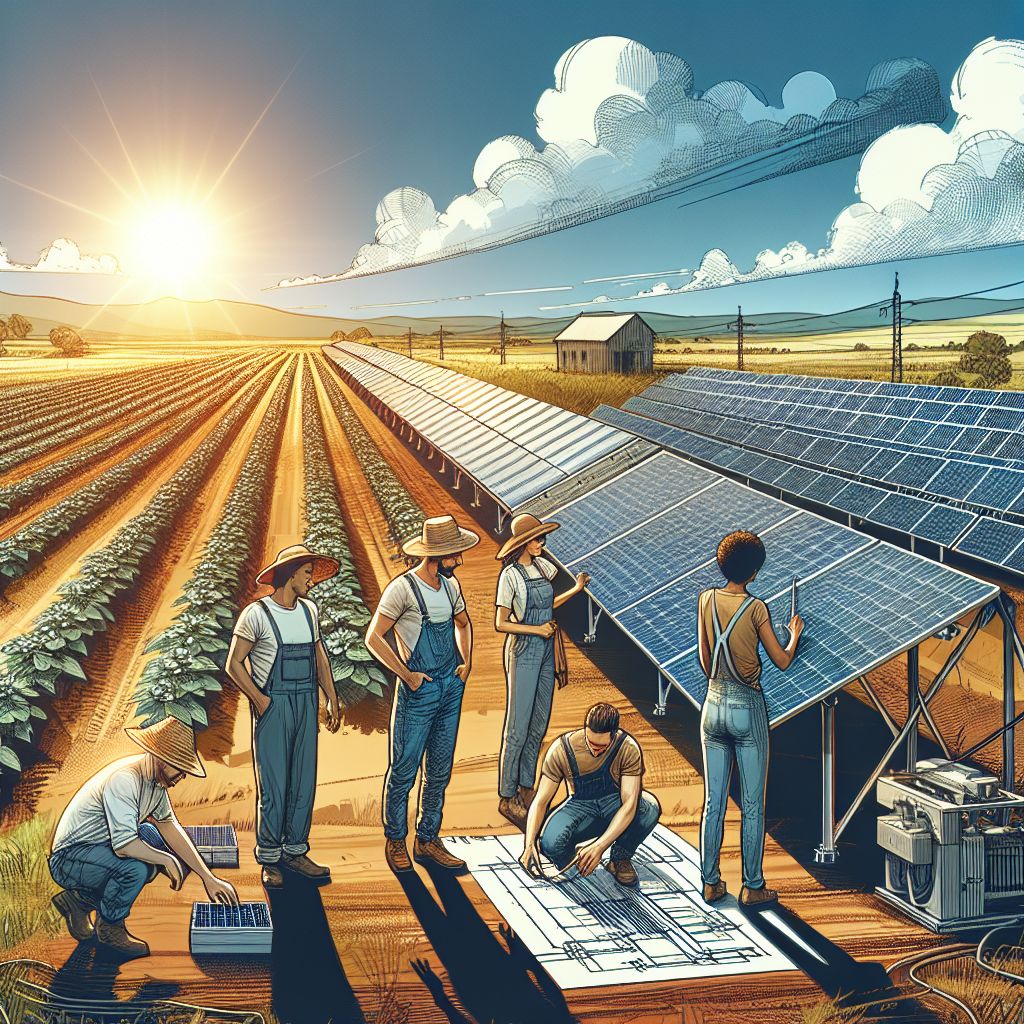
How Farmers Can Install Solar Trackers
Putting in solar trackers may seem like a huge undertaking, but it’s not as intimidating as you might think. Here’s how to begin:
Choosing the Ideal Location: Sun Exposure, Soil Stability, and Solar Access
The initial stage involves choosing the ideal location. The area should have maximum sunlight, minimum shading, and strong soil to bear the weight of the tracker structures. Bear in mind that the most suitable location is not always the most apparent one. At times, a slightly inclined surface can offer better sunlight than a flat one.
Getting Your Solar Panel Trackers Up and Running: The Installation Process
After you’ve picked out the perfect spot for your solar panel trackers, the next step is to put everything together and turn it on. This part of the process can be quite labor-intensive and requires a certain level of technical expertise, so you might want to consider hiring a professional to do it for you. They’ll take care of setting up the trackers and solar panels, hooking everything up to your power system, and making sure it’s all working properly. For more insights, you might find this article on sun tracking solar panels helpful.
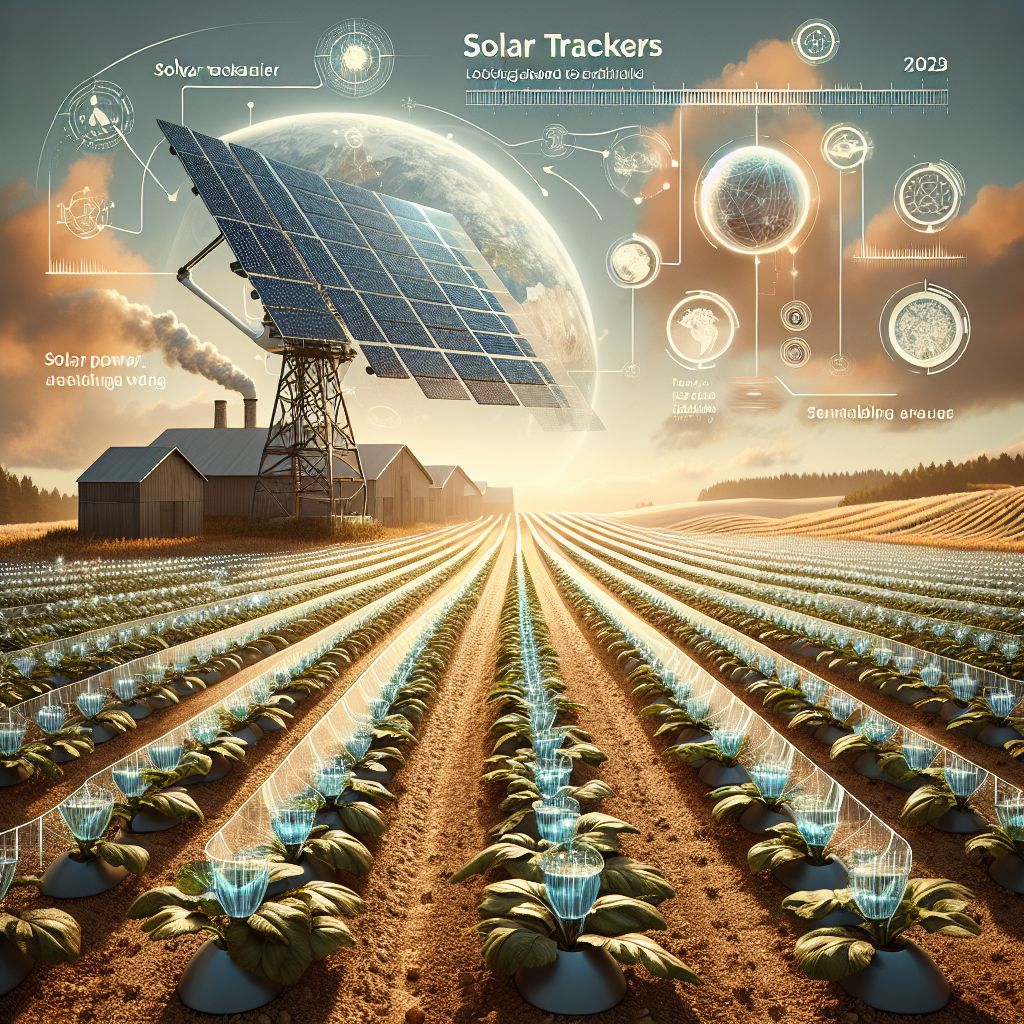
What’s Next in Farming: Solar Tracking Advancements
As we look to the future, farming with solar trackers is becoming increasingly promising. Technological advancements are making trackers more effective and more widely available.
For instance, the weight of solar trackers is being reduced by new designs, which makes them simpler to install and less harmful to the land. Also, software enhancements are allowing for more accurate control of the panels, extracting every last bit of energy from the sun’s rays.
Looking Ahead to 2025: What’s Next in Agrivoltaics Technology?
As we look to the future of agrivoltaics, we see exciting developments in the works that combine solar energy with agriculture in new and innovative ways. For example, semi-transparent solar panels are now being used to grow crops that require partial shade, while also generating electricity. This dual-use technology is especially beneficial in areas where land is at a premium.
Climate Change Adaptation: Sustainable Methods for the Future
Climate change presents many challenges, and it’s more important than ever to adopt sustainable practices like solar tracking. Solar trackers help farms adapt to changing weather patterns by reducing reliance on fossil fuels and optimizing water use, contributing to a healthier planet for future generations.
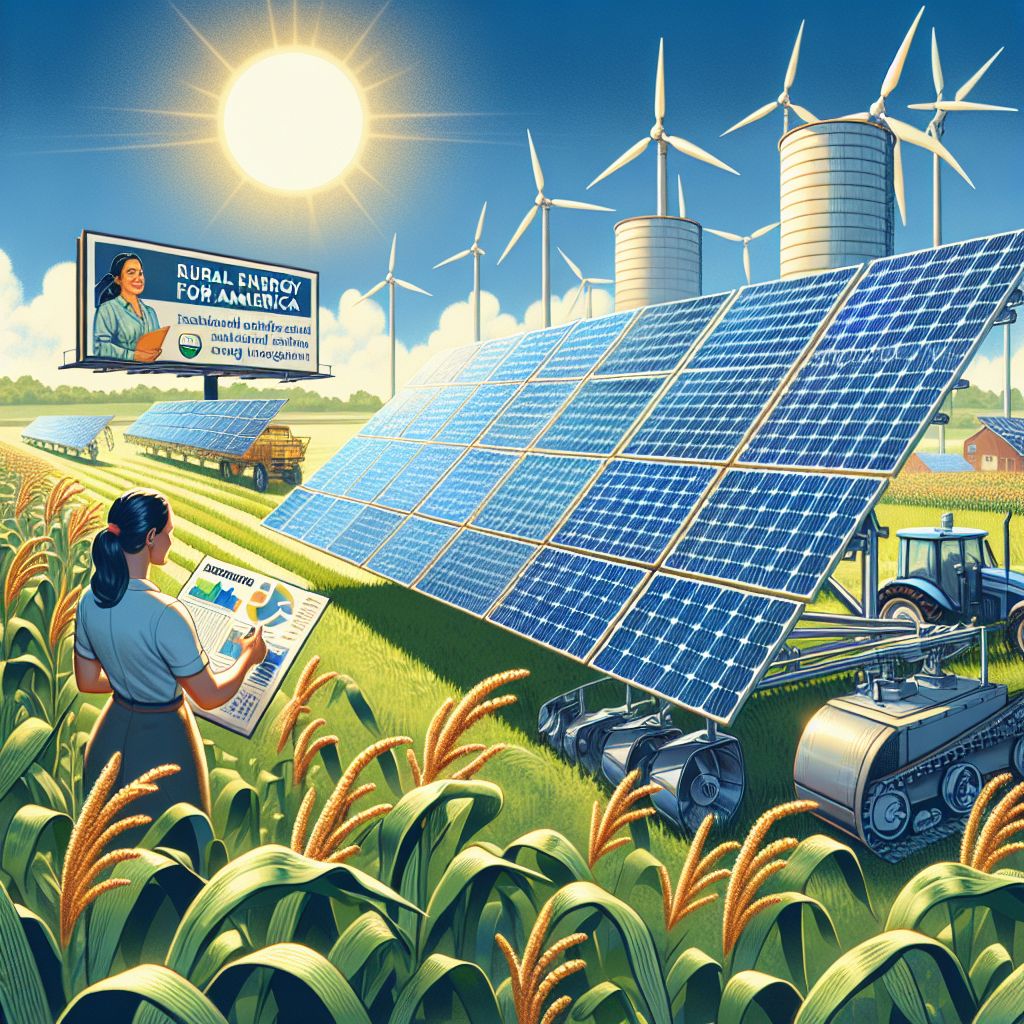
Financial Considerations: Predicting ROI for Solar Tracker Installations
It’s time to crunch some numbers. Solar tracker installations can provide a substantial return on investment (ROI). Although the initial investment may be considerable, the long-term energy bill savings and potential for improved crop yields make it a financially savvy decision for many farmers.
Let’s say, for instance, that a medium-sized farm invests in solar trackers. The upfront cost might be $20,000, but the farm could save $5,000 a year on energy. That means the farm would break even in just four years. After that, the farm would be saving money. Plus, there are the benefits to the environment and the potential for higher crop yields, which could mean more revenue.
Also, keep in mind that many governments offer grants and subsidies for renewable energy projects. These can significantly lower the initial investment. So it’s worth looking into these options before making a decision.
Funding Your Solar Tracker: Renewable Energy Incentives
Looking into local and national grants can significantly reduce the cost of installing solar trackers.
Incentives for renewable energy can include tax credits, rebates, and direct subsidies.
Programs such as the USDA’s Rural Energy for America Program (REAP) provide financial aid to agricultural producers.
Consulting with renewable energy experts can assist farmers in navigating the complexities of applying for grants.
The most important thing is that grants and subsidies can help to alleviate the financial burden of adopting solar tracker technology. As governments around the world push for more sustainable farming practices, they are offering incentives to encourage the transition. These incentives can take many forms, from tax credits and rebates to direct funding, and they can make a significant difference in the initial outlay for solar tracker systems.
As a result, it’s important for farmers to do their research and find all the financial help they can get. The USDA’s Rural Energy for America Program is a great example of a grant that can pay for up to 25% of the total expenses. This can greatly reduce the ROI time, making solar trackers a much more appealing investment for those in the farming industry.
So, it’s a good idea to seek advice from professionals who are experienced in renewable energy grants. They can offer valuable insights and help throughout the application process, making sure you make the most of the available financial aid.
Final Thoughts
In summary, solar panel trackers are a game-changer for sustainable and efficient farming. They not only lower operational expenses by capturing maximum sunlight, but they also enhance crop yield by improving irrigation and water management. The upfront cost might be high, but with the support of grants and subsidies, and the long-term energy cost savings, solar trackers are a cost-effective solution for today’s farmers.
Powering the Future of Farming: The Rise of Solar Panel Trackers
Looking ahead, the adoption of solar panel trackers in agriculture is more than a fad; it’s an essential progression. Solar trackers are set to be a pillar of sustainable farming due to their dual benefits of cost reduction and improved crop yield. They provide a solution to climate change while guaranteeing food security and financial viability for farmers worldwide.
Frequently Askes Questions
What Are the Main Expenses for Installing a Solar Tracker?
The main expenses for installing solar trackers on a farm can include the hardware (solar panels and tracking mechanisms), labor for installation, and any additional equipment needed to integrate the system with existing electrical infrastructure. These expenses can vary widely depending on the size and type of system you choose.
Typically, a single-axis tracker system might set you back anywhere from $500 to $1,000 per panel, and dual-axis trackers are generally more costly. However, the increased energy production can help to balance out these costs, and there may also be grants or subsidies available.
What is the Impact of Solar Trackers on Farm Operations?
Solar trackers can greatly influence the daily running of a farm. They offer a steady and dependable power supply, which can power irrigation systems, lighting, and other electrical machinery. This can result in a more resource-efficient operation and reduced operational expenses.
Take, for example, a dairy farm in Vermont that used solar trackers to power their milking equipment. This not only reduced their dependence on the grid but also resulted in savings on their monthly electricity bills.
Moreover, having solar trackers on a farm can serve as a symbol of the farm’s dedication to sustainability. This could draw in customers who appreciate eco-friendly practices.
Do Solar Trackers Work for All Kinds of Crops?
Solar trackers are generally a good fit for many types of crops, especially those that need a lot of sunlight. They are especially useful for high-value crops where the increase in yield can quickly pay for the cost of the solar tracker system.
Nonetheless, it’s critical to think about your crops’ unique requirements and whether the infrastructure necessary for solar trackers will impede their development. For instance, vineyards may not be able to accommodate tall structures because machinery needs to be able to move easily between the rows.
Are Solar Trackers Able to Survive Extreme Weather?
Solar trackers are built to be sturdy and can survive many different weather conditions, such as strong winds and heavy rainfall. Many systems are equipped with storm protection features that automatically adjust the panels to reduce wind resistance and potential harm.
It is essential to select a system that is designed to withstand the particular weather conditions of your area. Regular maintenance and inspections can also assist in ensuring that your solar tracker system continues to function well, no matter what the weather is like.
When Will I See a Return on Investment for My Solar Tracker System?
The period it takes to see a return on investment (ROI) for solar tracker systems can differ. Factors that can affect this include the cost of the system, the amount of sunlight your location receives, the efficiency of the trackers, and the cost of electricity in your area.







Leave a Reply